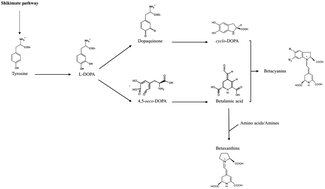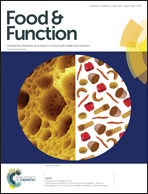Coloring attributes of betalains: a key emphasis on stability and future applications
Abstract
Organoleptic characteristics largely determine food acceptance, selection, and subsequent consumption. Therefore, food colorants are extremely important in the food industry. However, based on the latest findings related to the side effects and toxicity issues of some synthetic colorants, consumers worldwide have shown increasing interest in natural alternatives. Betalains are good examples of natural colorants and therefore the present study reviews the main sources of these pigments, their structural elucidation and biosynthetic pathways, their chemical instability to different environmental factors, as well as their potential uses at the industrial level and also for pharmaceutical and cosmetic purposes, due to their ability to act as functional ingredients and health enhancers/promoters. Betalain natural pigments represent a promising and safe alternative to synthetic dyes, but their chemical instability has limited their widespread use. Temperature, pH, water activity, oxygen, light, chelating agents, the presence of other compounds, pigment concentration, storage, and processing conditions are the most important factors affecting their stability. It is, therefore, very important to establish optimum processing conditions to maximize the stability of betalains and their extraction yields, focusing on their effective use as natural food colorants, functional ingredients and value-added food products.



 Please wait while we load your content...
Please wait while we load your content...